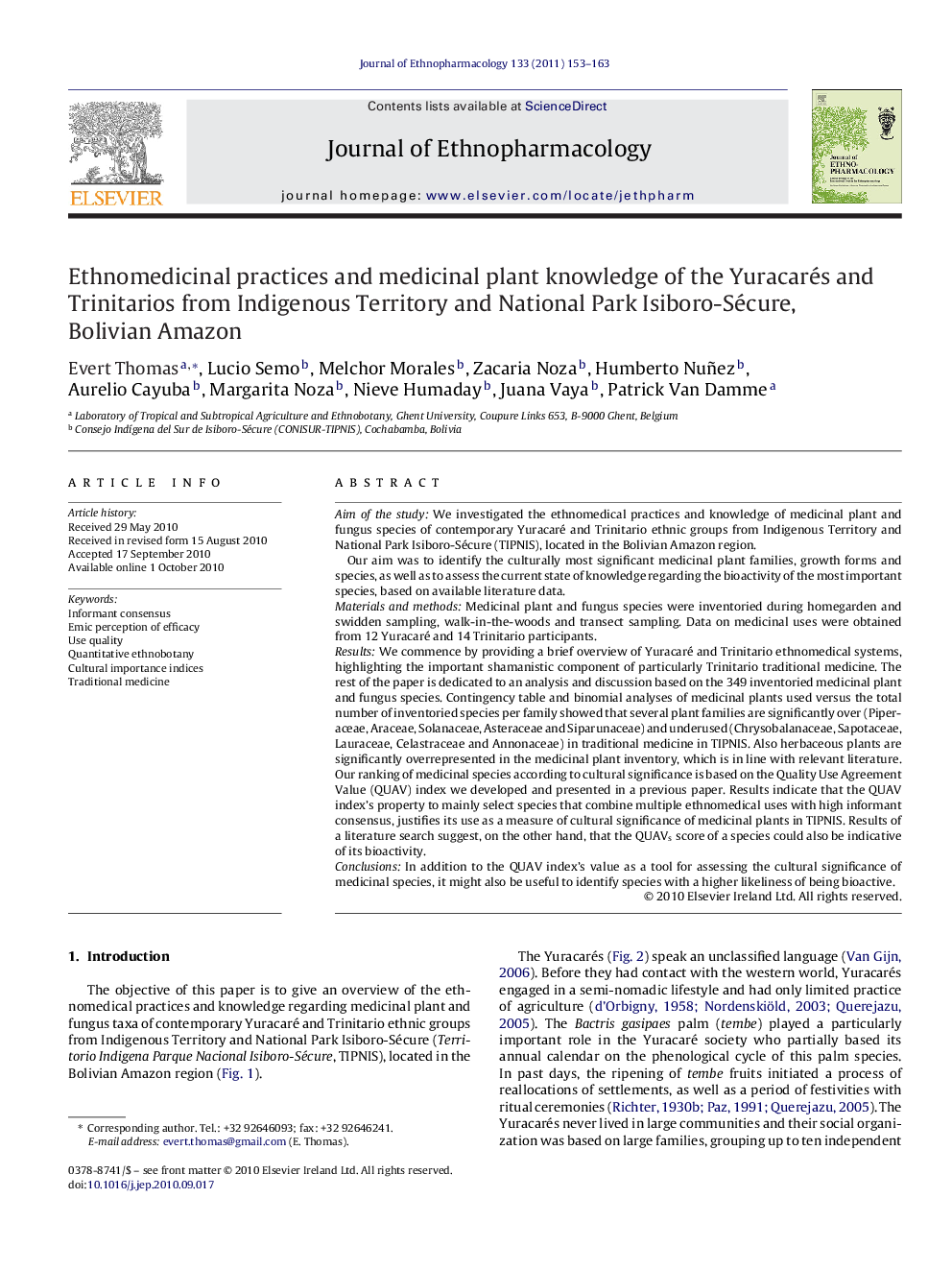| کد مقاله | کد نشریه | سال انتشار | مقاله انگلیسی | نسخه تمام متن |
|---|---|---|---|---|
| 2546047 | 1124014 | 2011 | 11 صفحه PDF | دانلود رایگان |

Aim of the studyWe investigated the ethnomedical practices and knowledge of medicinal plant and fungus species of contemporary Yuracaré and Trinitario ethnic groups from Indigenous Territory and National Park Isiboro-Sécure (TIPNIS), located in the Bolivian Amazon region.Our aim was to identify the culturally most significant medicinal plant families, growth forms and species, as well as to assess the current state of knowledge regarding the bioactivity of the most important species, based on available literature data.Materials and methodsMedicinal plant and fungus species were inventoried during homegarden and swidden sampling, walk-in-the-woods and transect sampling. Data on medicinal uses were obtained from 12 Yuracaré and 14 Trinitario participants.ResultsWe commence by providing a brief overview of Yuracaré and Trinitario ethnomedical systems, highlighting the important shamanistic component of particularly Trinitario traditional medicine. The rest of the paper is dedicated to an analysis and discussion based on the 349 inventoried medicinal plant and fungus species. Contingency table and binomial analyses of medicinal plants used versus the total number of inventoried species per family showed that several plant families are significantly over (Piperaceae, Araceae, Solanaceae, Asteraceae and Siparunaceae) and underused (Chrysobalanaceae, Sapotaceae, Lauraceae, Celastraceae and Annonaceae) in traditional medicine in TIPNIS. Also herbaceous plants are significantly overrepresented in the medicinal plant inventory, which is in line with relevant literature. Our ranking of medicinal species according to cultural significance is based on the Quality Use Agreement Value (QUAV) index we developed and presented in a previous paper. Results indicate that the QUAV index's property to mainly select species that combine multiple ethnomedical uses with high informant consensus, justifies its use as a measure of cultural significance of medicinal plants in TIPNIS. Results of a literature search suggest, on the other hand, that the QUAVs score of a species could also be indicative of its bioactivity.ConclusionsIn addition to the QUAV index's value as a tool for assessing the cultural significance of medicinal species, it might also be useful to identify species with a higher likeliness of being bioactive.
AimIdentify culturally most significant medicinal plant families, growth forms and species of Yuracaré and Trinitario from Bolivian Amazon.Materials and methodsMedicinal species collected during walk-in-the-woods, in homegardens, swiddens, and transects. Medicinal uses recorded from 26 Yuracaré and Trinitario participants.Results
• Traditional medicine has shamanistic and empirical components.
• New index Quality Use Agreement Value’ could be indicative of bioactivity plant.Figure optionsDownload as PowerPoint slide
Journal: Journal of Ethnopharmacology - Volume 133, Issue 1, 7 January 2011, Pages 153–163